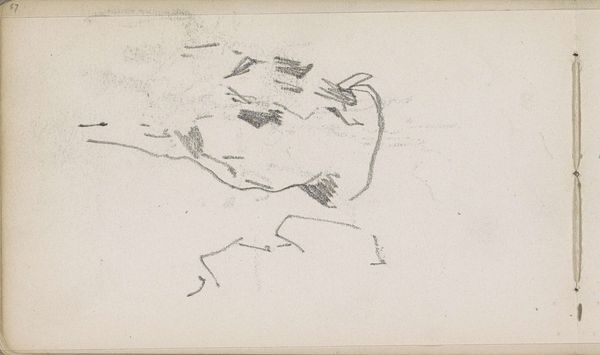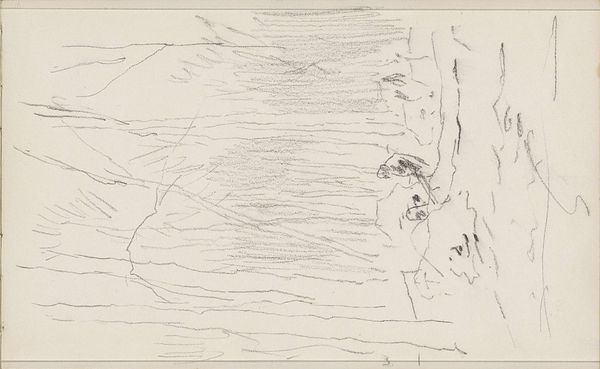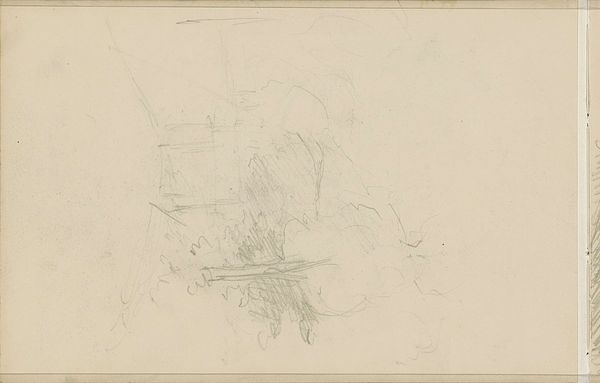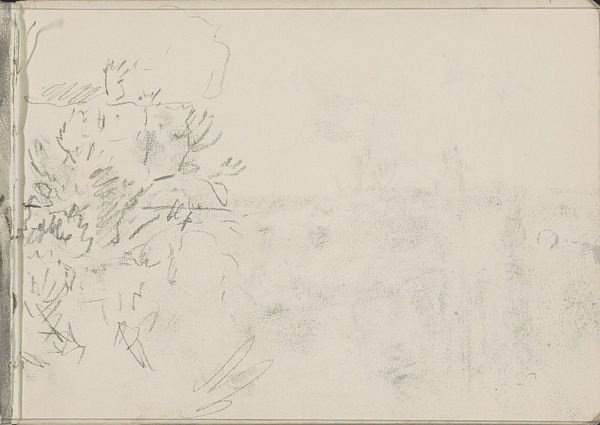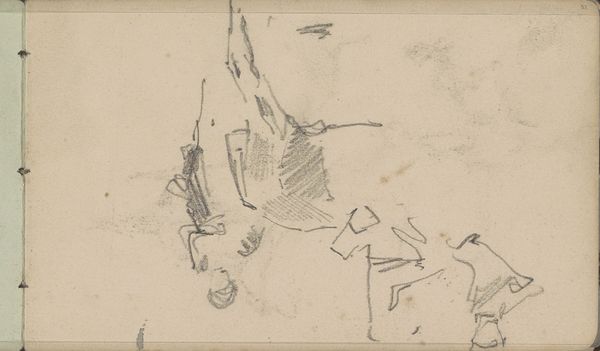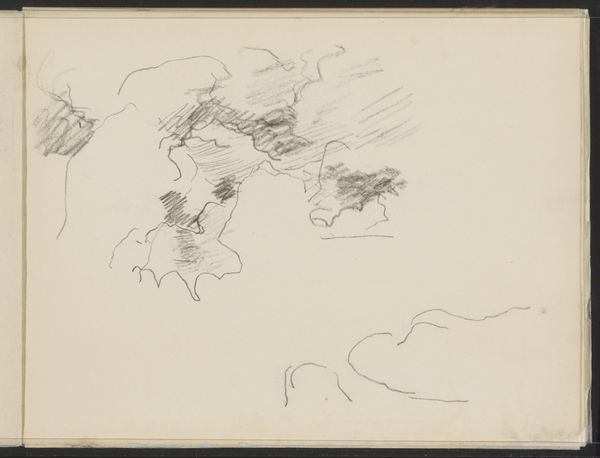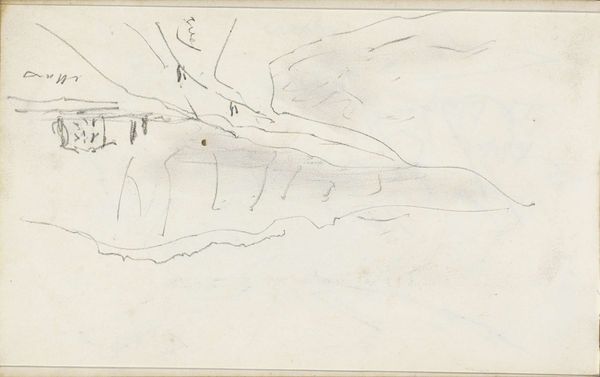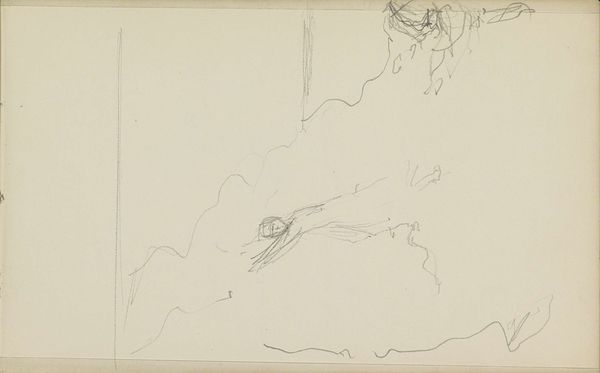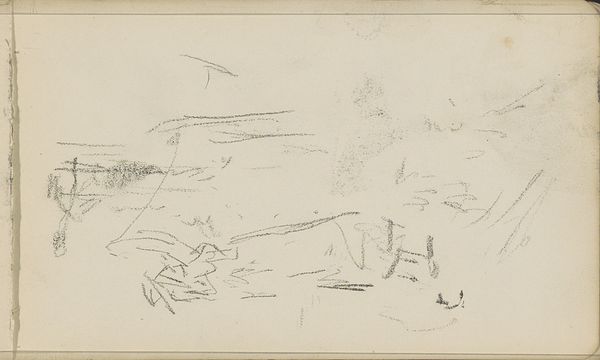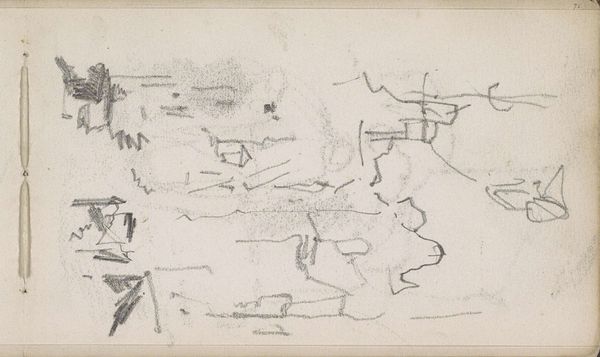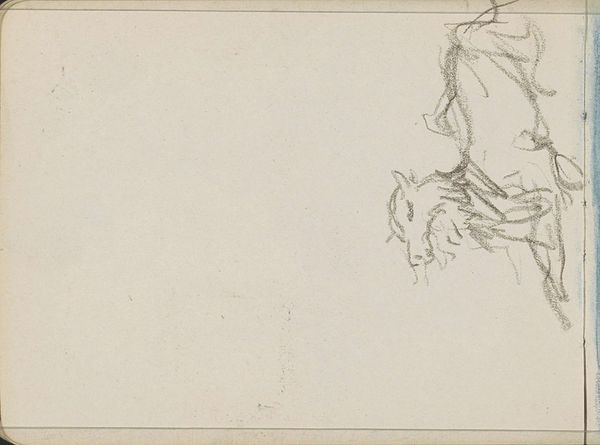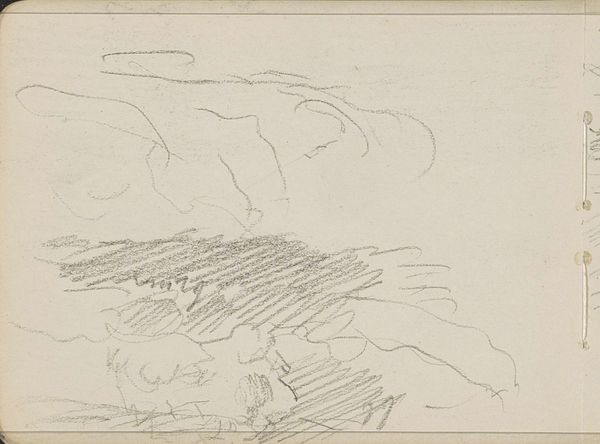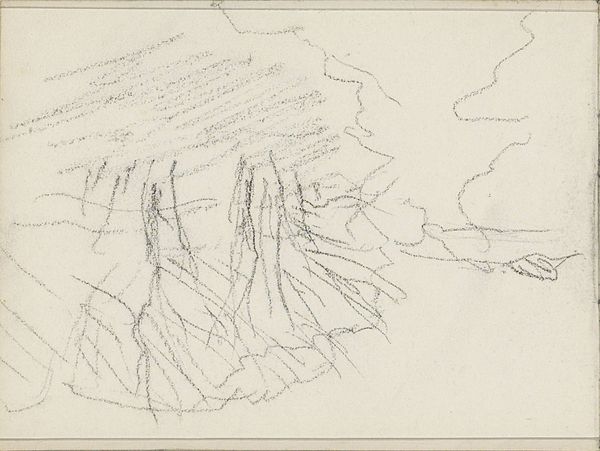
light pencil work
pen sketch
personal sketchbook
idea generation sketch
sketchwork
ink drawing experimentation
pen-ink sketch
sketchbook drawing
sketchbook art
initial sketch
Copyright: Rijks Museum: Open Domain
Curator: This sketch, titled "Landschap," attributed to Johan Antonie de Jonge and dating between 1884 and 1927, offers an intimate glimpse into the artist's process. Editor: It's very spare, isn't it? Raw, even. It feels like a fleeting moment captured quickly with just a pencil. There is a stark contrast between the blank paper and the dark foliage. Curator: Indeed. De Jonge likely used pen and ink for the bolder strokes in areas of density. Sketchbooks are really workhorses—vital spaces where artists test ideas. Notice how de Jonge appears to explore light and shadow effects with these initial lines and rapid strokes. He captures something about how light drapes onto vegetation, a sort of atmospheric weight, if you will. Editor: What do we know about sketchbooks during this period? Were they intended to be shared, or mostly for the artist’s private use, a personal exploration? Curator: Sketchbooks held varied functions in the late 19th and early 20th centuries, a time of evolving art markets. While often intended for personal exploration, the Romantic conception of the artist meant there was value ascribed to artistic insight more generally, so displaying sketchbook work had its public uses too. We also cannot discount the economy and use value involved; it can be viewed as part of art's commodification through new printing technologies like photography which were expanding at that time, a record for the archives. The paper itself speaks to a moment. Editor: It strikes me that even this brief view is telling. The constraints inherent in the materials shape what the artist can achieve. In this sense, materiality gives direction to what we call "art." The interplay here is intriguing! Curator: It certainly is. This small work offers so much— a testament to de Jonge's artistry. Editor: A great reminder that "finished" is not always where the art lies.
Comments
No comments
Be the first to comment and join the conversation on the ultimate creative platform.
